Harry Clarke was his name. He was an absolute master at creating wonder with bits of colored glass and light.
Even surpassing Louis Comfort Tiffany, who I consider one of the best of our age, Clarke may hold the title for the greatest stained glass artist of all time. He certainly can lay claim to that title for the twentieth century.
So why has no one heard of him?
An untimely death
It’s an exaggeration, of course, to say that no one has heard of him – he’s well-known in his native land of Ireland and in churches from Scotland to the UK to Australia. But he hasn’t gotten the press of a Tiffany or a Chagall.
Perhaps that’s due to his untimely death from tuberculosis in 1931, just short of his 42nd birthday. He didn’t have time to develop a wide international reputation, the kind that took Tiffany decades to establish. He also didn’t have the business skills for promoting himself and his art like Tiffany did. He was a pure artist and only secondarily a businessman.
In contrast, Tiffany inherited his father’s massive jewelry business and established his own major decorating business (which survive today as the combined entity, Tiffany and Co.) and lived to the ripe old age of eighty-four, twice the lifespan of Clarke.
It’s one of those tragedies of history that sometimes great geniuses die young. We can only wonder what further masterpieces he would have produced had he lived longer.
The crowning glory of Irish glass
The I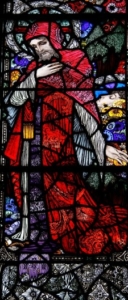 rish are known for their phenomenal glassware and cut-glass crystal, an art they learned from the Venetians several centuries ago. They’ve developed glassmaking (including stained glass) into an art form that their secular and religious missionaries have carried to the ends of the earth.
rish are known for their phenomenal glassware and cut-glass crystal, an art they learned from the Venetians several centuries ago. They’ve developed glassmaking (including stained glass) into an art form that their secular and religious missionaries have carried to the ends of the earth.
An Irish priest I knew had the most exquisite (and expensive) collection of Waterford crystal I ever saw, but he never claimed to have a vow of poverty!
The Catholic Church in America has benefited from several centuries of Irish missionary priests who have come to our shores, built churches, and decorated them with Irish stained glass.
Harry Clarke’s only commission in the United States came in 1928 for the Basilica of St. Vincent de Paul in Bayonne, NJ. He only partially finished the series of windows before he died. His studio completed the project in 1940.
A “jewel-like” style
One of the hallmarks of true genius is that you can immediately identify a master artist’s style when you see it. There may be imitations and forgeries, but the one-of-a-kind style of the genius shines through like the flawless printed $100 bill from the US mint in the face of all the counterfeits.
Clarke’s style defies strict categorization, but, not surprisingly, medieval stained glass was his primary artistic influence. His visit to Chartres Cathedral in northern France in 1913 made the deepest impression on him and put a certain stamp of brilliance on his later art.
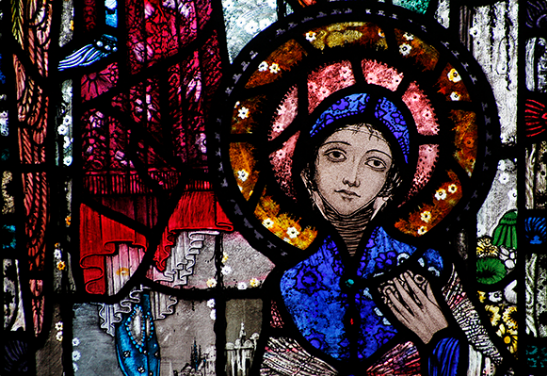
Earlier, during his formative years (the 1890s early 1900s), he was exposed to a host of other artistic trends and movements, traces of which can be seen in his stained glass as well. Among these influences were Pre-Raphaelite painting and the Arts and Crafts movement in England; Symbolism and Art Nouveau in France; as well as Art Deco in the US.
He thought the windows of Chartres had a “jewel-like effect”, and if there is one term that generally characterizes Clarke’s style it is just that: “jewel-like”. His stained glass windows simply sparkle when the natural light flows through them.
A stunning sign of the Art Deco influence in his art is his depiction of the Archangel Gabriel wearing ballet slippers in the Annunciation window in St. Joseph Church in South Dublin (see detail at right)!
A man of details
Clark’s windows – even the most strictly religious themes – simply abound with flora and fauna, which shows the abiding influence of the Art Nouveau and Symbolist movements on his work. He was a master at filling his windows with shades of vibrant colors and tiny details that astound the perceptive eye. Instead of pigment on a canvas, Clark painted with glass and light.
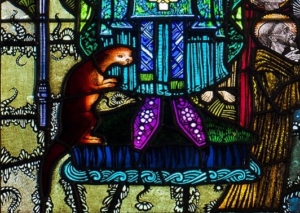 For example, if you look closely at the St. Cuthbert window in the Durham Cathedral in England, you will see a little stained glass otter at the feet of the great English saint. Legend has it that an otter emerged from the water and dried the feet of the missionary as he crossed the English Channel to evangelize the people.
For example, if you look closely at the St. Cuthbert window in the Durham Cathedral in England, you will see a little stained glass otter at the feet of the great English saint. Legend has it that an otter emerged from the water and dried the feet of the missionary as he crossed the English Channel to evangelize the people.
And you will not find a greater collection of obscure Irish saints than in Harry Clarke’s windows. They are scattered like brilliant shards of incarnate holiness in colorful windows across the Emerald Isle. He was a card-carrying member of the Celtic revival in art in the late 19th and early 20th centuries. His famous Geneva Window (now residing in a museum in Miami) features Ireland’s finest writers immersed in colorful scenes from their tumultuous lives. It is one of only a handful of windows he created for a secular
Harry Clarke resources
I was introduced to Clarke’s work on a visit to Dublin in the early ‘90s, when a friend took me to an exhibition of some of his windows on display at a local museum. I have been a Harry Clarke devotee ever since.
There are also two excellent books about his life and works (published by The History Press), and a documentary, that have catalogued all his windows in extreme detail and color. They are worth their hefty price (plus shipping from overseas).
It is hard to find good high-resolution images of his windows on the internet, but I have assembled a few images available in the public domain for the gallery below. If you search for “Harry Clarke Stained Glass” on Pinterest or Flickr, you will find many lower-resolution copies of his bright images, which will fascinate you for hours.
NOTE: If you click on any image in the gallery, you can scroll through all the photos in their fine detail. Please take a moment to drink in the shimmering wonder of Harry Clarke’s genius.
You may not conclude (as I did) that he is the world’s greatest stained glass artist, but you will undoubtedly be impressed by his flawless artistry.
Soul Work
We all have some creative genius within us. We often equate creativity with artistic talent, but God’s gifts are not limited to art. There are many more humble gifts of spirit and service that are equally creative – that is, life-giving to us and others.
What is your specific gift? Harry Clarke’s gift was stained glasswork, and despite his short lifespan, I believe he illustrated well the principle that “to him who has more will be given” (Mark 4:25) because he so generously offered his gift to others.
That is the principle of gospel creativity. It means we only get more when we give away what we have!
Offer your gift in significant ways today. Those who offer their gifts with generosity of hear always receive more. God can never be outdone in generosity.
———-
Source: Lucy Costigan & Michael Cullen, Strangest Genius: The Stained Glass of Harry Clarke, Dublin: The History Press Ireland, 2010.
———-
[This article is a reproduction of the Sacred Windows Email Newsletter of 02/07/21, so it does not end with the regular Soul Work section. Please visit our Newsletter Archives.]

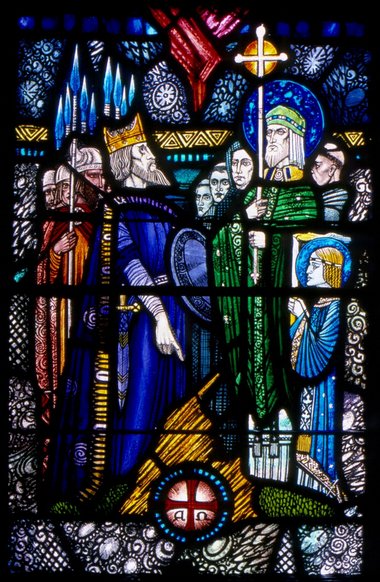
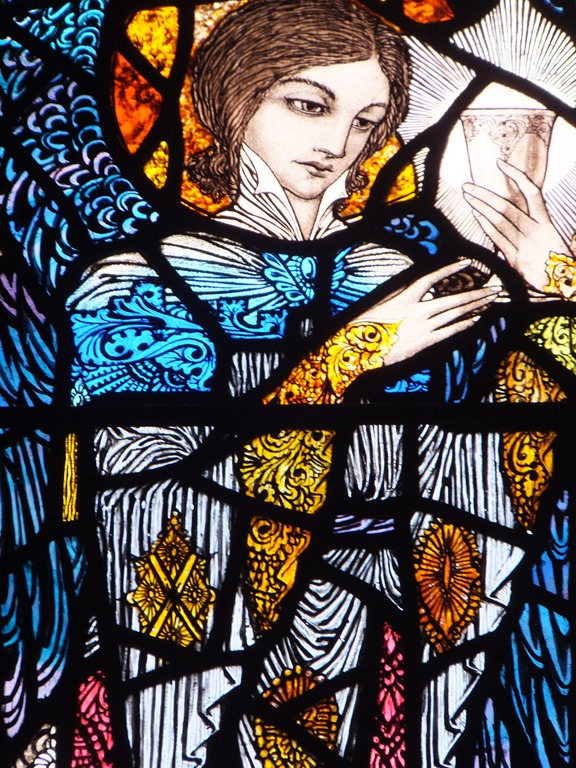
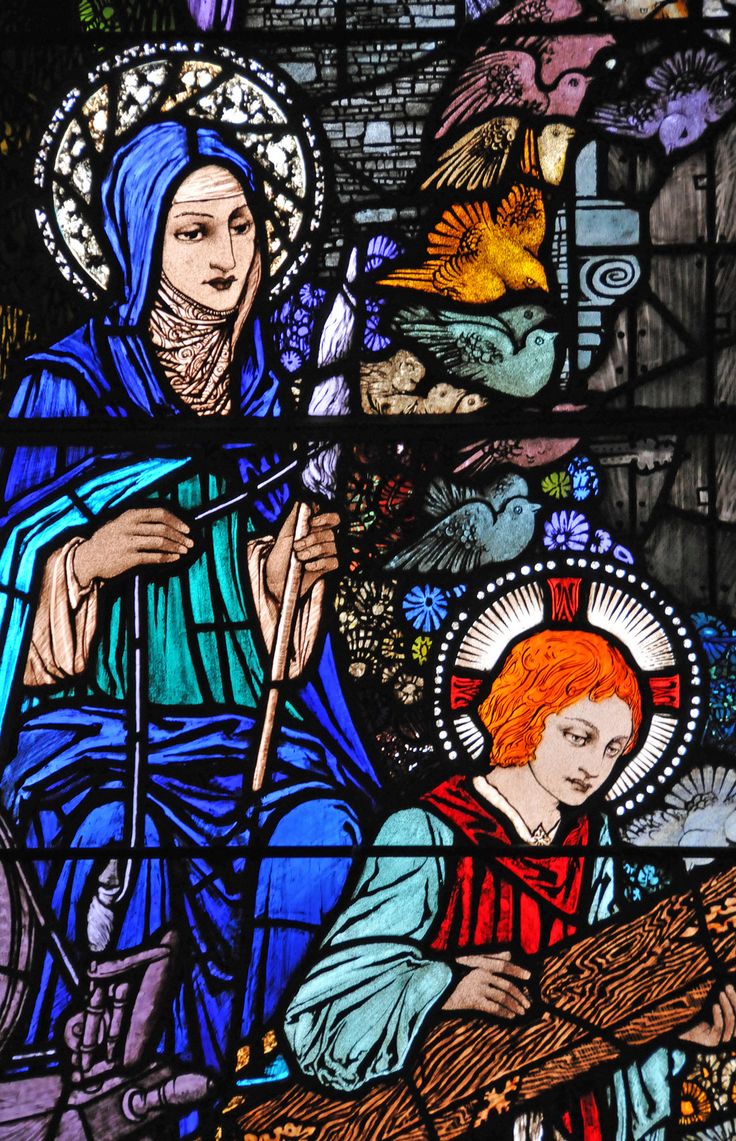
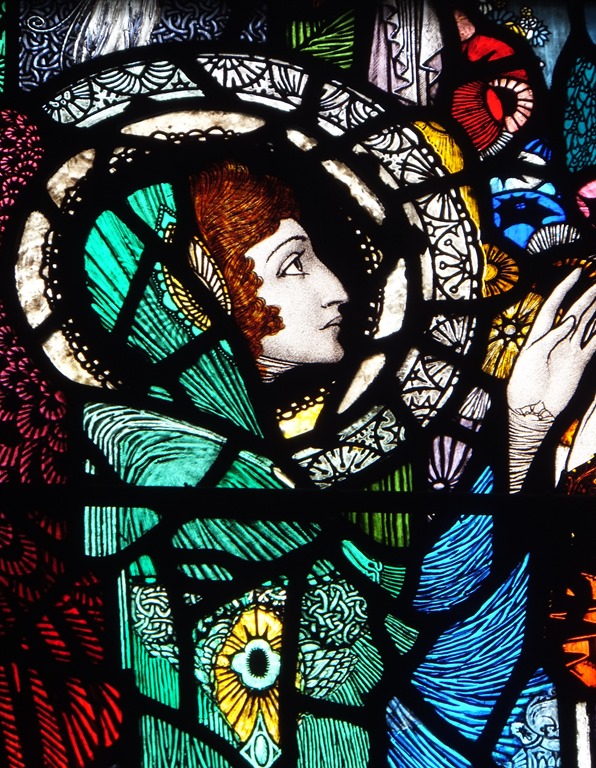

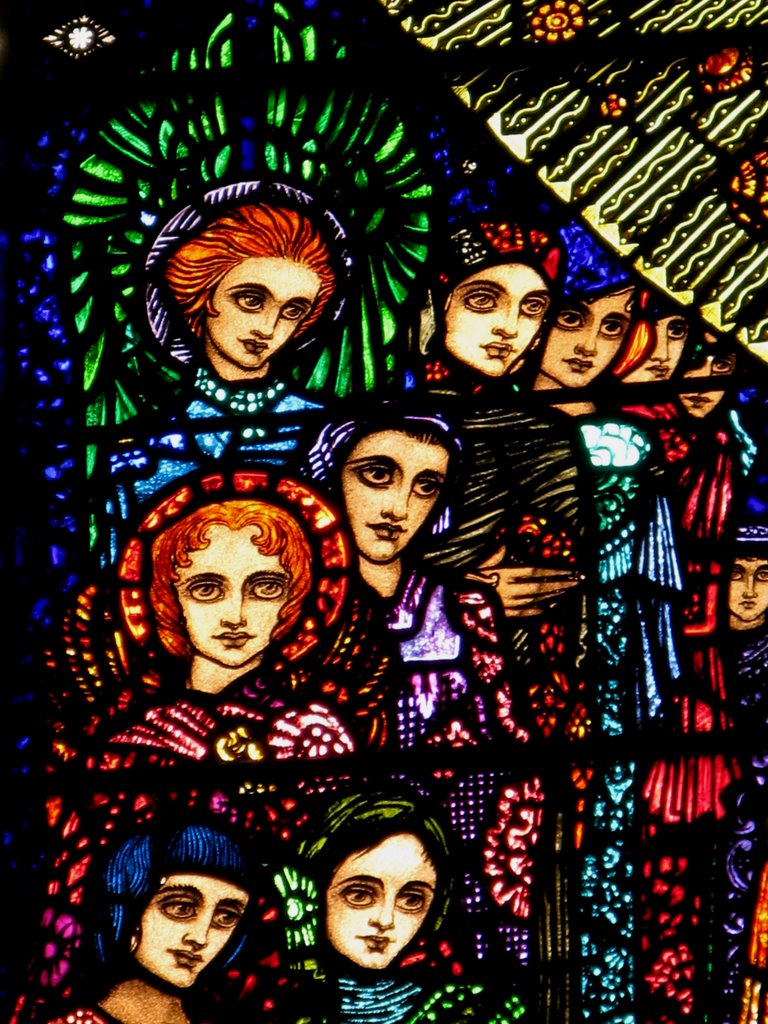
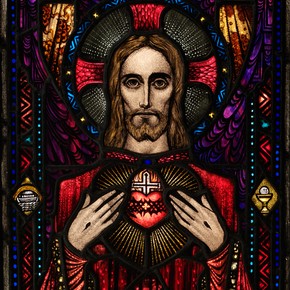
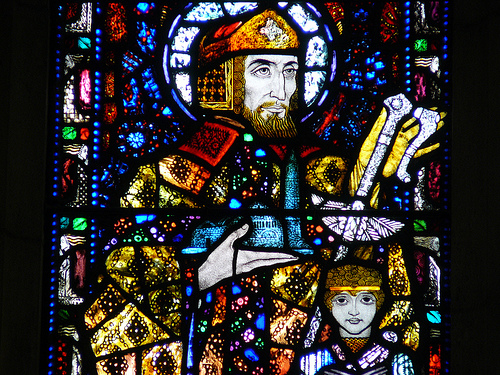
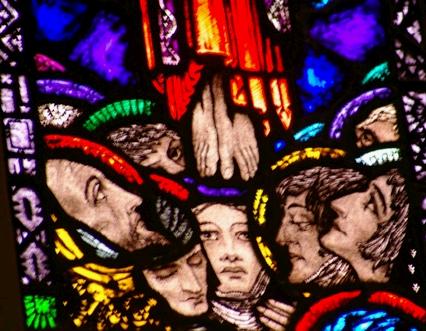
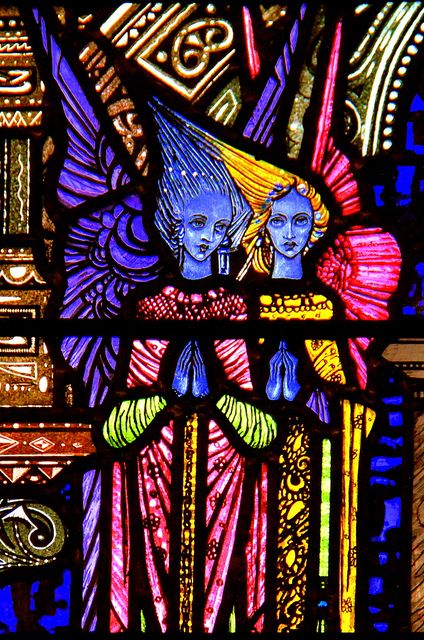
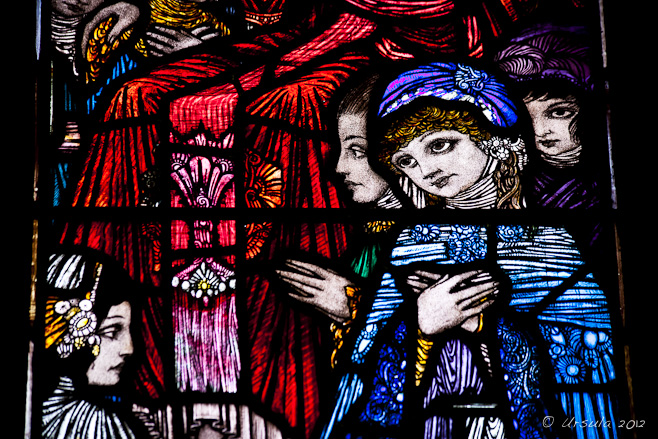
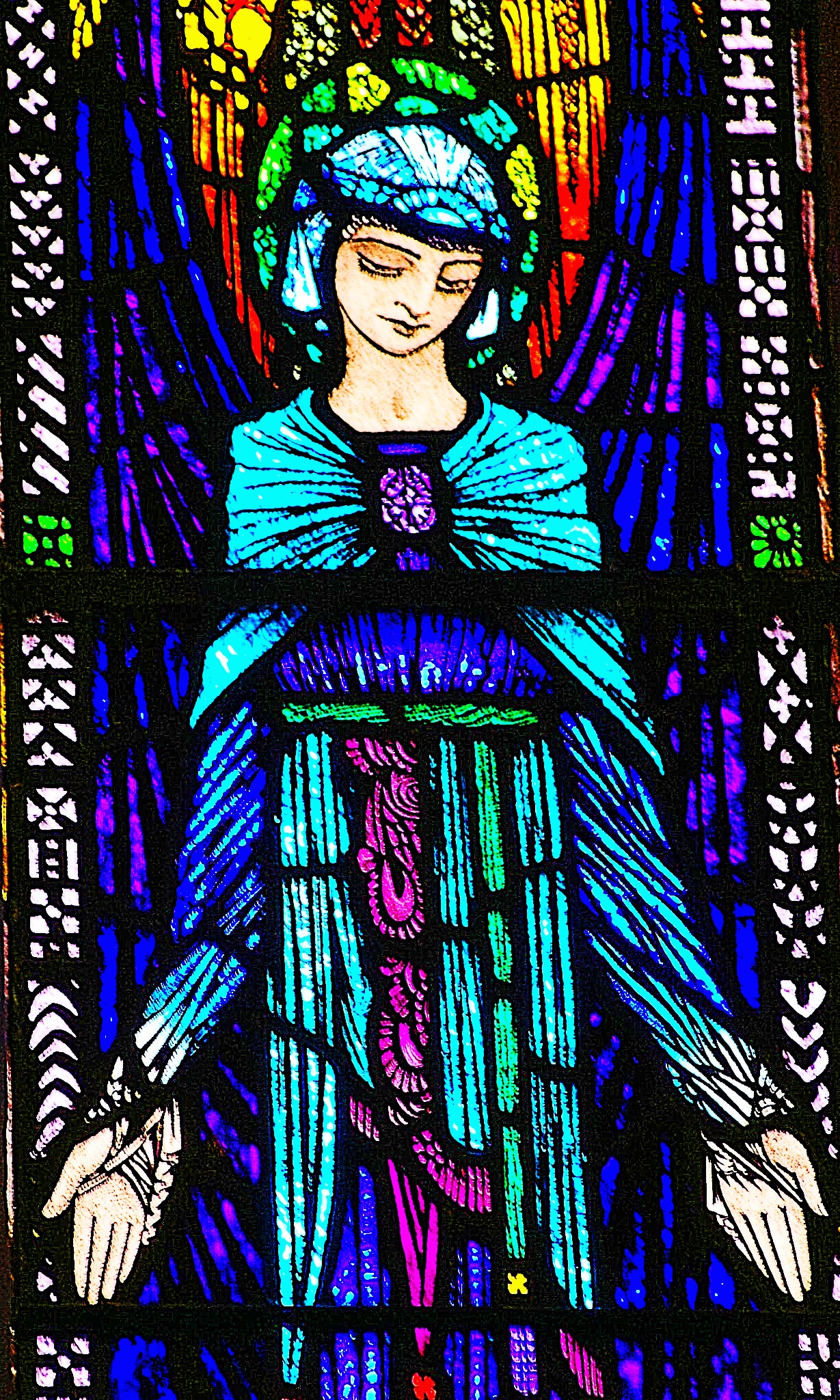
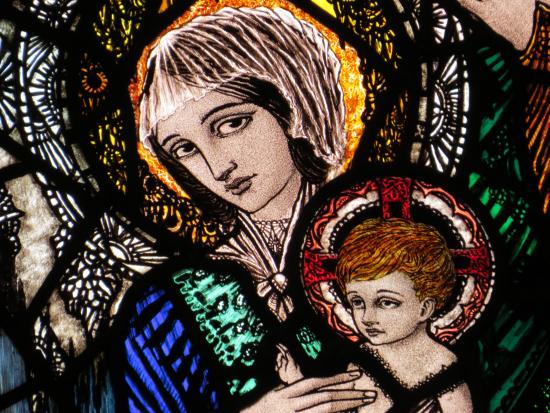

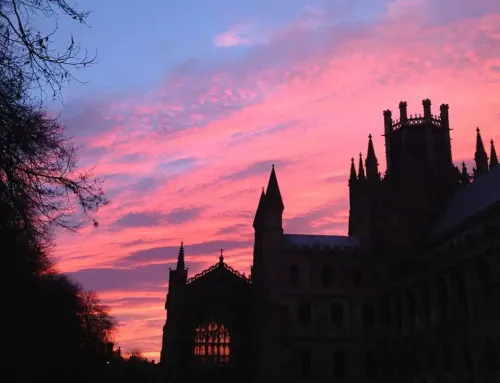

Our award-winning documentary film on the life and work of the great Irish artist ‘Harry Clarke – Darkness In Light’ might be of interest.
It features his biographer, relations, artists, academics and poets. http://www.camelproductions.net
Thank you! I plan to order it!
I must say I am ashamed of myself . I’m a person with 40 + years working in Stained ‘glass and have never heard of this mans work .
And I will say with out hesitation, I believe he was the best of out time . You only need see he knew flesh painting needs to be
Bold to be seen in a glass window , not to mention his creativity and invention. I need to study his work .
Hello Ken, thanks for your feedback. Don’t blame yourself. I know a man in NY who professionally photographs stained glass windows in the northeast, and he never heard of him either. I happened upon a show of Clarke’s stained glass windows in a Dublin museum in about 1995, which is the way I discovered him. He did glass for only one church in the US, and he died in his 30s, so, in one of those tragedies of history the world lost a real genius too young. Sadly too, there are very few outlets that feature his works in hi-resolution images. There have been a few pretty good documentaries made on him, and a couple wonderful coffee table books with brilliant images in them, but they are produced in Europe and expensive to buy and ship. The best resource I’ve been able to find for hi-res Harry Clarke images is the website below. As the luck of the Irish would have it, the lady who took the pix didn’t like Sacred Windows and wouldn’t give me permission to use them when I politely requested. In any case, check it out. https://roaringwaterjournal.com/2017/12/03/harry-clarke-at-lough-derg/. And thanks again for the feedback. All the best!
Thank you Peter for the additional information, and the link .
Seriously, I do know what I’m saying, I began this craft in 1978 and
I’ve NEVER seen such splendid work not century’s old .
His boldness of color and design humbles me. I know this because when i
See someone’s work almost always I say to myself “ I can do that “ but with Harrys
Work I say “ how did he do it ! I could never be that good “. Then I know I’m looking
At greatness .
Hi Ken, it’s nice to know I’m not alone in my admiration for Clarke. I had exactly the same reaction the first time I saw his masterworks, and I’m not an artist like you. I just appreciate genius when I see it. Who knows what he would have turned out if he had lived longer, but he gave an immense gift to the world. All the best. PD
The comment above about Clarke’s only commission in the US being found in NJ is probably an error. There is a church in East Sacramento that has about 10 or a dozen of his windows, made in the late 1920s.
When I first saw the exquisiteness, the ethereal beauty of his work i felt hot tears welling up in my startled eyes. I was truly gobsmacked by this other world of colour and shapes that the brains of normal people can not conjure up, it was/is a beauty impossible to replicate in any other artistic medium Harry Clarke was not a normal person, he had gifts bestowed on him that are very rare in the human gene pool gifts that only the immortals take for granted.